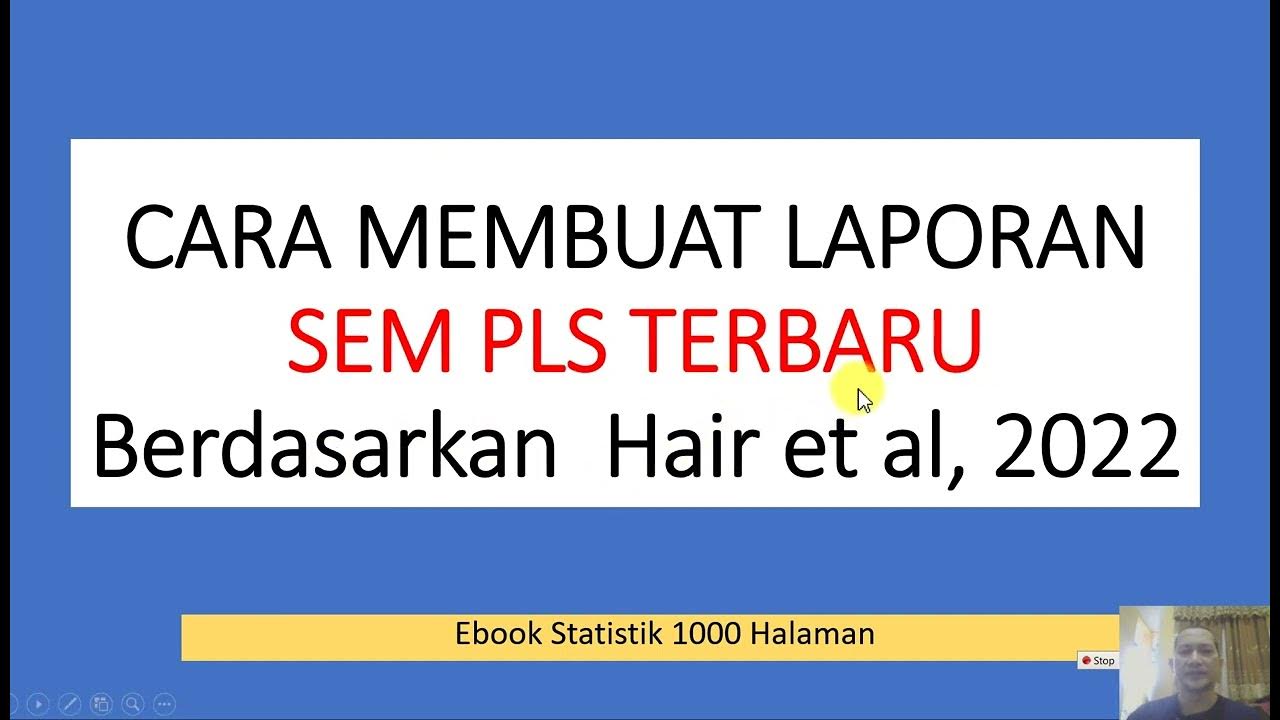Penjelasan Singkat Analisis Mediasi dan Moderasi
Summary
TLDRThis video script explains the key concepts of mediation and moderation analysis in research. Mediation analysis explores how an independent variable (X) influences a dependent variable (Y) through a mediator (M), examining both direct and indirect effects. Moderation analysis, on the other hand, investigates how a moderator variable (W) alters the strength or direction of the relationship between X and Y. The script outlines the differences between these methods, their applications, and the assumptions underlying each analysis, providing a comprehensive understanding of their roles in examining variable relationships in research.
Takeaways
- 😀 Mediation and moderation analysis are methods used to understand the relationship between independent variable X and dependent variable Y.
- 😀 Mediation analysis investigates how a third variable (M) mediates the effect of X on Y, identifying the psychological processes involved.
- 😀 In mediation analysis, the total effect of X on Y consists of both direct and indirect effects, with indirect effects passing through M.
- 😀 The indirect effect involves X influencing M, which in turn affects Y, while the direct effect represents X's impact on Y without considering M.
- 😀 Mediation analysis can involve multiple mediator variables in a chain, called serial mediation, where X leads to M1, then M2, and so on.
- 😀 The main goal of mediation analysis is to test one-way relationships: X to M, M to Y, and X to Y.
- 😀 Moderation analysis tests whether the relationship between X and Y changes depending on the presence of a moderator variable (W).
- 😀 A moderator variable (W) affects the strength or direction of the relationship between X and Y, often tested through interaction effects in regression models.
- 😀 The key difference between mediation and moderation analysis is that mediation explains *how* X affects Y through a mediator, while moderation explains *when* or *under what conditions* X affects Y.
- 😀 In moderation analysis, the moderator variable influences the impact of X on Y, such as whether the relevance of a topic moderates the relationship between arguments (X) and attitude change (Y).
- 😀 Both mediation and moderation analysis require specific assumptions, such as one-way causality in mediation and testing for significant interactions in moderation.
Q & A
What are the main types of research variables mentioned in the transcript?
-The main types of research variables mentioned are the independent variable (X) and dependent variable (Y). There are also mediating and moderating variables, which are explored through mediation and moderation analysis, respectively.
What is mediation analysis, and why is it important?
-Mediation analysis helps test how the independent variable (X) affects the dependent variable (Y) through a third variable, called the mediator (M). It helps to understand the psychological processes that mediate the effect of X on Y.
What is the role of a mediator in mediation analysis?
-The mediator is a variable that explains how or why the independent variable (X) affects the dependent variable (Y). It acts as a link in the causal chain between X and Y.
What are the three important components of mediation analysis?
-The three important components of mediation analysis are the indirect effect (X to M to Y), the direct effect (X to Y, controlling for M), and the total effect (X to Y without considering M).
What is the difference between direct and indirect effects in mediation analysis?
-The direct effect is the influence of X on Y, controlling for the mediator (M), while the indirect effect is the influence of X on Y through the mediator M.
What does a non-significant direct effect in mediation analysis indicate?
-A non-significant direct effect (p-value > 0.05) suggests that the relationship between X and Y is mediated by the mediator variable (M), rather than being a direct relationship.
Can mediation analysis include more than one mediator?
-Yes, mediation analysis can include multiple mediators in a serial mediation model, where X influences M1, M1 influences M2, and so on, until the final outcome Y.
What is moderation analysis and how is it different from mediation analysis?
-Moderation analysis tests whether a variable (the moderator) influences the strength or direction of the relationship between X and Y. Unlike mediation, which explains how X affects Y, moderation examines when and under what conditions X affects Y.
What is a moderator variable in moderation analysis?
-A moderator variable is a third variable (often denoted as W) that influences the magnitude or direction of the relationship between the independent variable (X) and dependent variable (Y).
How is the moderation effect tested in regression analysis?
-The moderation effect is tested by creating an interaction term, usually the product of the independent variable (X) and the moderator variable (W). If the interaction term is significant, it indicates that the moderator variable has a moderating role in the relationship between X and Y.
Outlines

This section is available to paid users only. Please upgrade to access this part.
Upgrade NowMindmap

This section is available to paid users only. Please upgrade to access this part.
Upgrade NowKeywords

This section is available to paid users only. Please upgrade to access this part.
Upgrade NowHighlights

This section is available to paid users only. Please upgrade to access this part.
Upgrade NowTranscripts

This section is available to paid users only. Please upgrade to access this part.
Upgrade NowBrowse More Related Video

Intro Mediation Moderation - part1

Mediation Analysis Part 2 (with Demonstration) | TAGALOG - ENGLISH

TUTORIAL SMARTPLS 4: CARA MEMBUAT LAPORAN SEM PLS REFERENSI HAIR ET AL, 2022 (TERBARU)

Tutorial SEM PLS dengan Variabel Mediasi Menggunakan SmartPLS 4 || Lengkap dengan referensi

CONCILIAÇÃO, MEDIAÇÃO E ARBITRAGEM - DIFERENÇAS | Métodos alternativos de resolução de conflitos

#vidiopembelajaraSeputaranMasalahAtauPotensiPenelitianKualitatif
5.0 / 5 (0 votes)